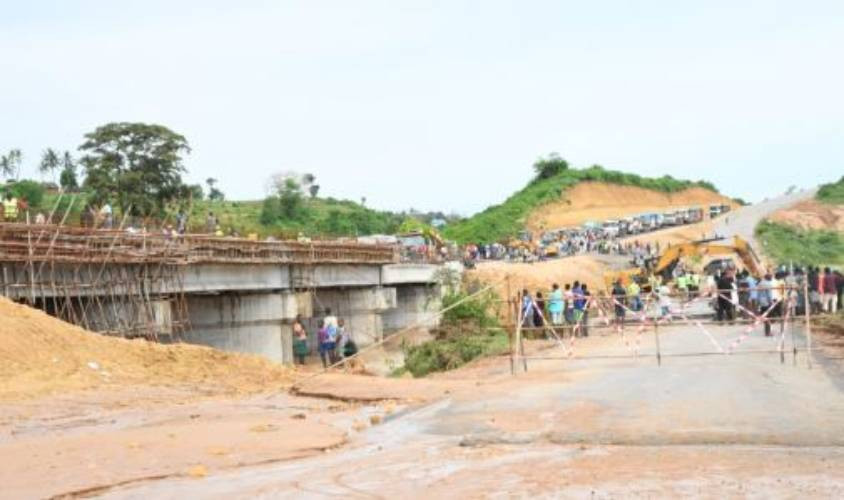The Kenya National Highways Authority (Kenha) has introduced a new system at the weighbridges which automatically senses the legal weight of trucks in motion.
Installed by Societe Generale de Surveillance (SGS), a South African company, the technology is reported to have reduced the number of vehicles having to go through the static scale for weigh limit confirmation by more than 80 per cent.
From the Port of Mombasa through the Mariakani, Athi River, Gilgil and Webuye weighbridges, truck drivers are not stopped unless they exceed the legal weight.
Isaac Wanjohi, the SGS branch manager at the Gilgil weighbridge in Nakuru County, said the technology recently became operational at the toll station that is notorious for causing massive traffic snarl-ups.
Heavy cargo
A machine, only known as HSWIM, is fitted with underground sensors to detect trucks that weigh five per cent less or more of their respective legal weight as per the group or individual axles.
The machine senses the weight of trucks travelling at less than 50km per hour. It then transmits this information to computers on a screening lane specifically meant for the heavy cargo transport vehicles with above 3.5 tonnes.
At the point where the sensor is fixed, several automatic cameras inclined at various angles record the registration numbers and other physical details of the trucks that pass through. The details captured by the cameras act as evidence in case a vehicle transgresses or if driver or owner are charged in court.
For vehicles close or exceeding to the respective legal weight, the machines produce a red light at a fixed system 20 metres ahead. “The red light indicates that the vehicle has to pass through the static scale for confirmation of its weight. Those which are not suspected to have exceeded the legal weight limit are shown a green light, indicating they can proceed,” says Wanjohi.
The machine, according to Wanjohi, senses the weight in relation to number of group axles and gross weight against the legal weight. This information is then transmitted to a server which gives the results in two forms: a red light for those suspected to have exceeded legal weight, and green light for trucks that have complied with weight restrictions.
Those called in by the server are directed to the static weighing scale for confirmation of their weight. “In most cases, trucks with about 50kg less or more than the required limit are directed by the sensor to the static scale for confirmation,” says Wanjohi.
An operator, who can view all the vehicles and their details from a computer at the screening lane while sitting at an office, ensures all vehicles pass through the screening lane.
“If a driver decides to transgress by failing to either divert and pass through the screening lane, a police officer directs the driver to pass through static scale for confirmation,” says Wanjohi.
Road works at the section are, however, incomplete as they are yet to be fully fitted with traffic control booms which will automatically stop the vehicles from proceeding.
Reduced costs
Stay informed. Subscribe to our newsletter
Truck drivers found to have exceeded the legal weight in the axle group category are allowed to distribute their cargo or balance across all the axles and reweigh before they proceed.
“Those found to have violated the legal weight by gross weight are taken to court where they are charged and fined accordingly,” Wanjohi says.
For those who fail to stop, their details are recorded by the installed cameras and the vehicles are automatically tagged and will be arrested next time they try to pass through the section. The system rarely breaks down and in case of complex malfunctions, technicians from SGS South Africa are called in.
The system became operational in December at the Mariakani Weighbridge before it was extended to other sections across the country, says Muita Ngatia, the Kenha axle load control manager. Engineer Muita says the SGS system has reduced the cost of transporting cargo in the region as less time is wasted in the weighbridges.
“This means transporters may do several trips in a week,” Muita says.
The technology, he said, has also reduced human contact and motivated motorists to comply with the rules, drastically reducing manipulation of records that led to corruption at weighbridges.
“Initially, it was the police who decided which vehicle to weigh at the static scale, but with the automatic system there is no short cut,” he said.
Saves time
An average of about 1,700 vehicles were weighed compared to 3,000 currently weighed per day at Mariakani.
Muita, says Kenya is the second country in Africa to install the system after South Africa.
Adan Noor, a truck driver who makes regular trips from Mombasa to Tororo in Uganda, says he currently takes a shorter time delivering cement as compared to before.
“We now move without any interference,” he said. “We reach our destinations within the required time and customers get their orders delivered in time.”
Noor says he used to take 22 days for a journey to Kigali, Rwanda. He now takes only six days.
 The Standard Group Plc is a
multi-media organization with investments in media platforms spanning newspaper
print operations, television, radio broadcasting, digital and online services. The
Standard Group is recognized as a leading multi-media house in Kenya with a key
influence in matters of national and international interest.
The Standard Group Plc is a
multi-media organization with investments in media platforms spanning newspaper
print operations, television, radio broadcasting, digital and online services. The
Standard Group is recognized as a leading multi-media house in Kenya with a key
influence in matters of national and international interest.
 The Standard Group Plc is a
multi-media organization with investments in media platforms spanning newspaper
print operations, television, radio broadcasting, digital and online services. The
Standard Group is recognized as a leading multi-media house in Kenya with a key
influence in matters of national and international interest.
The Standard Group Plc is a
multi-media organization with investments in media platforms spanning newspaper
print operations, television, radio broadcasting, digital and online services. The
Standard Group is recognized as a leading multi-media house in Kenya with a key
influence in matters of national and international interest.






